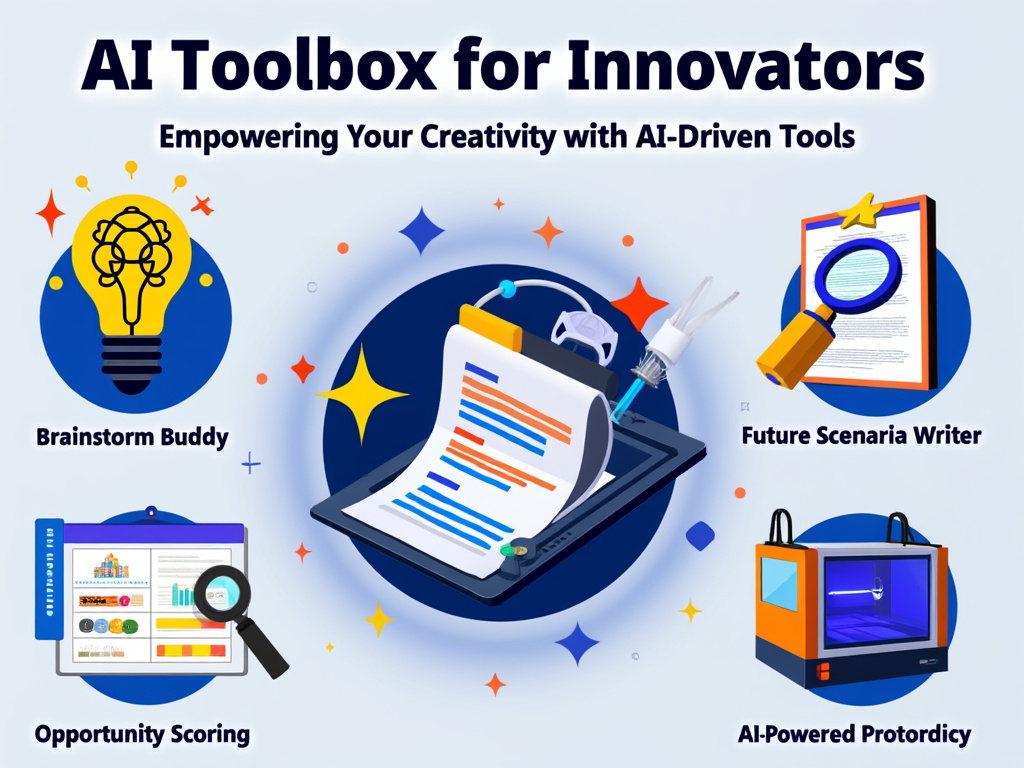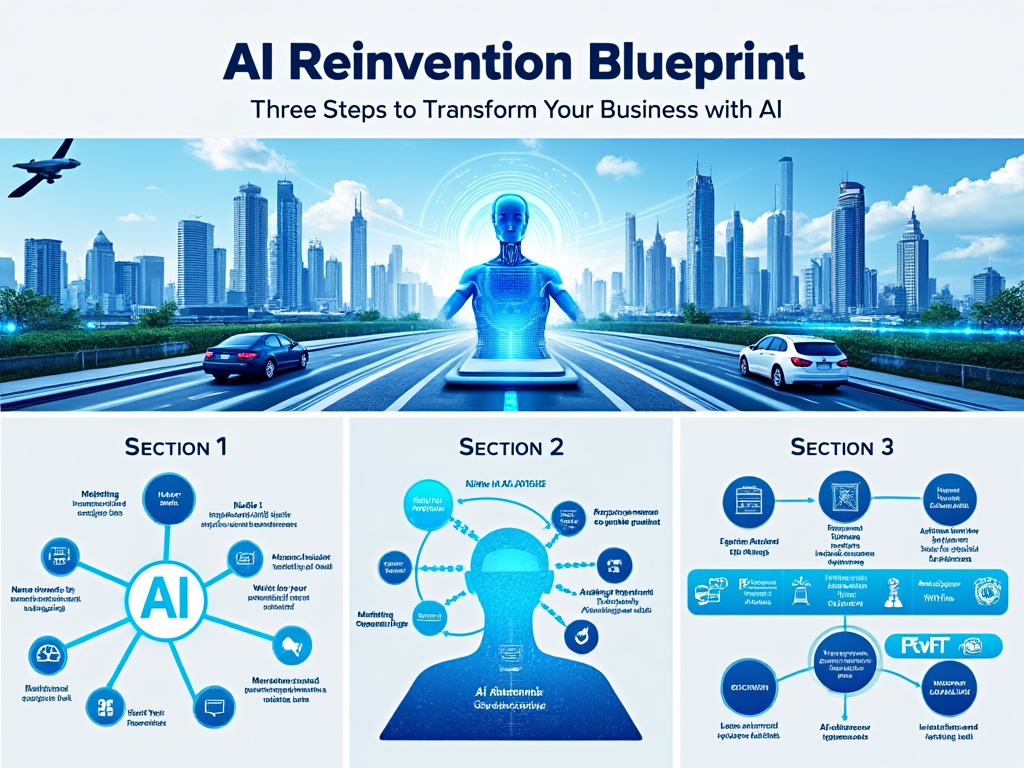AI for Innovators: A Comprehensive Guide to Leveraging Artificial Intelligence
AI for Innovators: A Comprehensive Guide to Leveraging Artificial Intelligence
Artificial Intelligence (AI) is transforming how organizations innovate, driving growth, and creating competitive advantages across various industries. This guide provides innovators with actionable strategies, tools, and insights to maximize AI’s potential in driving innovation.
Table of Contents
- Understanding AI’s Role in Innovation
- Creating an AI Strategy for Innovation
- Key AI Tools and Technologies for Innovators
- Implementing AI in Innovation Sprints
- Practical AI Applications Across Industries
- Building an AI-Driven Culture of Innovation
- Additional Resources
1. Understanding AI’s Role in Innovation
To effectively use AI for innovation, it is crucial to understand its role in the innovation landscape. AI can automate routine tasks, enhance decision-making with data insights, and create new products or services that were previously unimaginable. Here are the key areas where AI can drive innovation:
- Idea Generation: AI tools such as Generative AI models (like GPT-4 or DALL-E) can help brainstorm ideas, generate creative content, and support product development.
- Rapid Prototyping: AI accelerates the prototyping process by using machine learning to simulate various scenarios and outcomes, reducing the time to market.
- Predictive Analytics: By leveraging vast datasets, AI can predict market trends and customer preferences, helping you stay ahead of competitors.
To learn more about the fundamental role of AI in innovation, check out McKinsey’s insights on AI and innovation .

Figure 1: Overview of AI’s Role in Driving Innovation
2. Creating an AI Strategy for Innovation
Creating a robust AI strategy is essential for driving successful innovation. According to Stanford Online, a successful AI strategy should be aligned with your organization’s core business goals, leverage data effectively, and integrate seamlessly into existing operations. Here are four key steps to create an effective AI strategy:
- Define Clear Objectives: Start with a clear understanding of the problems you want AI to solve. Align these with your business goals to ensure AI efforts contribute to strategic growth.
- Develop a Roadmap: Outline a detailed implementation plan, including key milestones, necessary resources, and success metrics (KPIs).
- Build on Three Pillars: Your strategy should focus on three core areas: data (the fuel), algorithms (the intelligence), and infrastructure (the platform).
- Foster Collaboration: Encourage cross-functional teams to collaborate on AI projects, ensuring alignment with organizational goals and smooth integration.
Learn more about developing an AI strategy at Stanford Online .
3. Key AI Tools and Technologies for Innovators
To accelerate innovation, innovators must leverage the right tools. Here is a curated list of AI tools that can significantly enhance your innovation efforts:
- AI-Powered Innovation Sprints: Use AI tools to facilitate rapid ideation, prototyping, and testing. Platforms like OpenAI Codex or Midjourney can help automate repetitive tasks and accelerate creativity.
- Generative AI Tools: Generative AI (like GPT-4 or DALL-E) supports creativity by generating new ideas, designs, and solutions based on user input.
- AI Analytics Platforms: Tools like DataRobot or H2O.ai enable innovators to build predictive models, gain insights from big data, and enhance decision-making processes.
Explore a full list of AI tools at the Board of Innovation’s AI Toolbox .

Figure 2: Top AI Tools to Boost Innovation
4. Implementing AI in Innovation Sprints
An AI-powered innovation sprint is a highly effective way to generate and validate new ideas quickly. Here’s a step-by-step guide:
- Assemble a Diverse Team: Bring together cross-functional experts, including AI specialists, product managers, and creative professionals.
- Define the Problem Statement: Use AI tools to analyze data and identify the most pressing problems to solve.
- Use AI for Ideation: Leverage AI tools to generate a wide range of ideas quickly. Tools like Fermat and Midjourney can create visual prototypes based on text prompts.
- Prototype and Test: Develop rapid prototypes using AI and run real-time tests to validate concepts and iterate based on feedback.
Find more details on running AI-powered innovation sprints in McKinsey’s guide to driving innovation with generative AI .
5. Practical AI Applications Across Industries
AI is being applied across various industries to drive innovation and transform business operations:
- Healthcare: AI algorithms are enhancing diagnostics, drug discovery, and personalized treatment plans. Startups like Lumiata are leading the way in predicting chronic conditions with AI.
- Finance: AI is revolutionizing fraud detection, automated trading, and risk management. Platforms like Wealthfront use AI for personalized investment strategies.
- Manufacturing: AI-driven automation is improving quality control and optimizing supply chain management, reducing costs and enhancing efficiency.
Explore more examples in Deloitte’s AI Innovation Series .

Figure 3: AI Applications in Key Industries
6. Building an AI-Driven Culture of Innovation
Building a culture that embraces AI is critical for long-term success. Here are five steps to fostering an AI-driven culture:
- Educate and Upskill: Train your workforce on AI technologies and their applications.
- Encourage Experimentation: Foster a culture of experimentation by giving teams the freedom to test new AI ideas without fear of failure.
- Promote Cross-Functional Collaboration: Break down silos and encourage collaboration across departments to integrate AI into every aspect of the business.
- Celebrate Successes: Recognize and reward innovative uses of AI to encourage adoption across the organization.
- Align AI with Business Goals: Ensure all AI initiatives are directly tied to business objectives and growth strategies.
Learn more about creating an AI-driven culture at Harvard Business Review .
